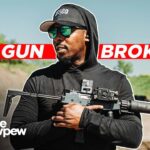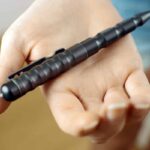It is interesting to look into the development of a tool. It begins with its purpose and is then refined in design, materials, and manufacture to produce a thing of performance. Occasionally, these processes fall short. The Navy Mark 3 Modification 0 knife would teeter on the brink of this premise.
The Right Blade
Since the early 1980s, the Ontario Knife Company (OKC) of Franklinville, New York made the Ontario Model 497, or MK 3 MOD 0, a diving and survival knife for U.S. Navy sailors. While no single designer is noted, the company sent early production models to the Navy based on its requirements. The preliminary knives went to Naval personnel, notably the SEALs, for testing and evaluation in 1980.
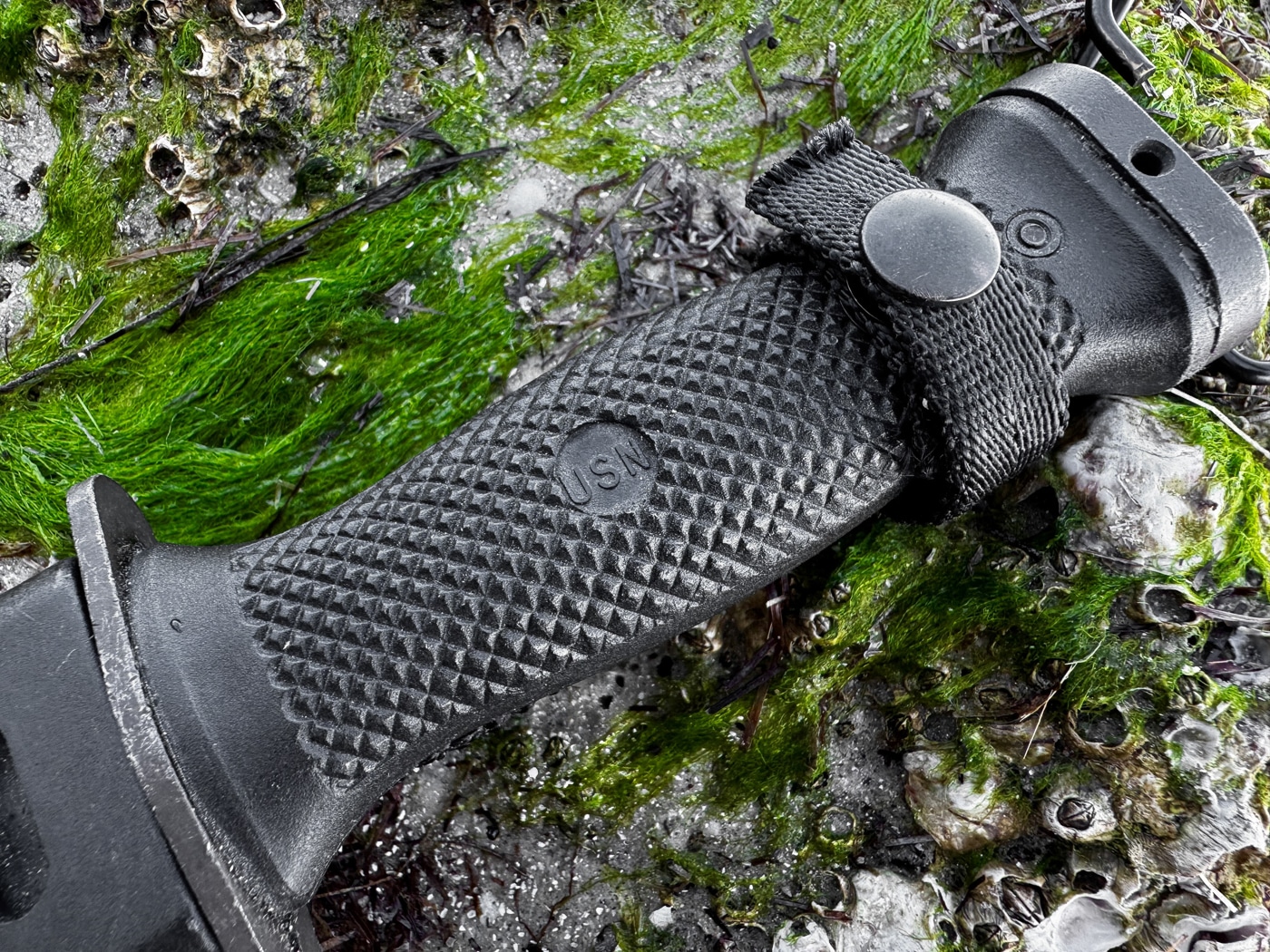
While the U.S. Navy SEALs were officially formed in January 1962, they were predated starting in WWII by the Amphibious Scouts & Raiders (S&R), Naval Combat Demolition Units (NCDU) and then the Underwater Demolition Teams (UDT). The Navy had previously issued its MK 1, or Deck Knife, as a utility knife since the 1940s or the USN MK 2, aka the USMC’s Knife, Fighting Utility.
The Deck Knife was intended for normal working chores. The MK 2 was a combat knife with survival potential. Neither of these knives were ideal for undersea maritime operations. Both had stacked leather handles that would degrade in the salt water and be abraded by the barnacle, coral and sand strata in which the divers would find themselves. The same went for the early leather sheaths. Later sheaths would be upgraded with canvas and fiberglass.
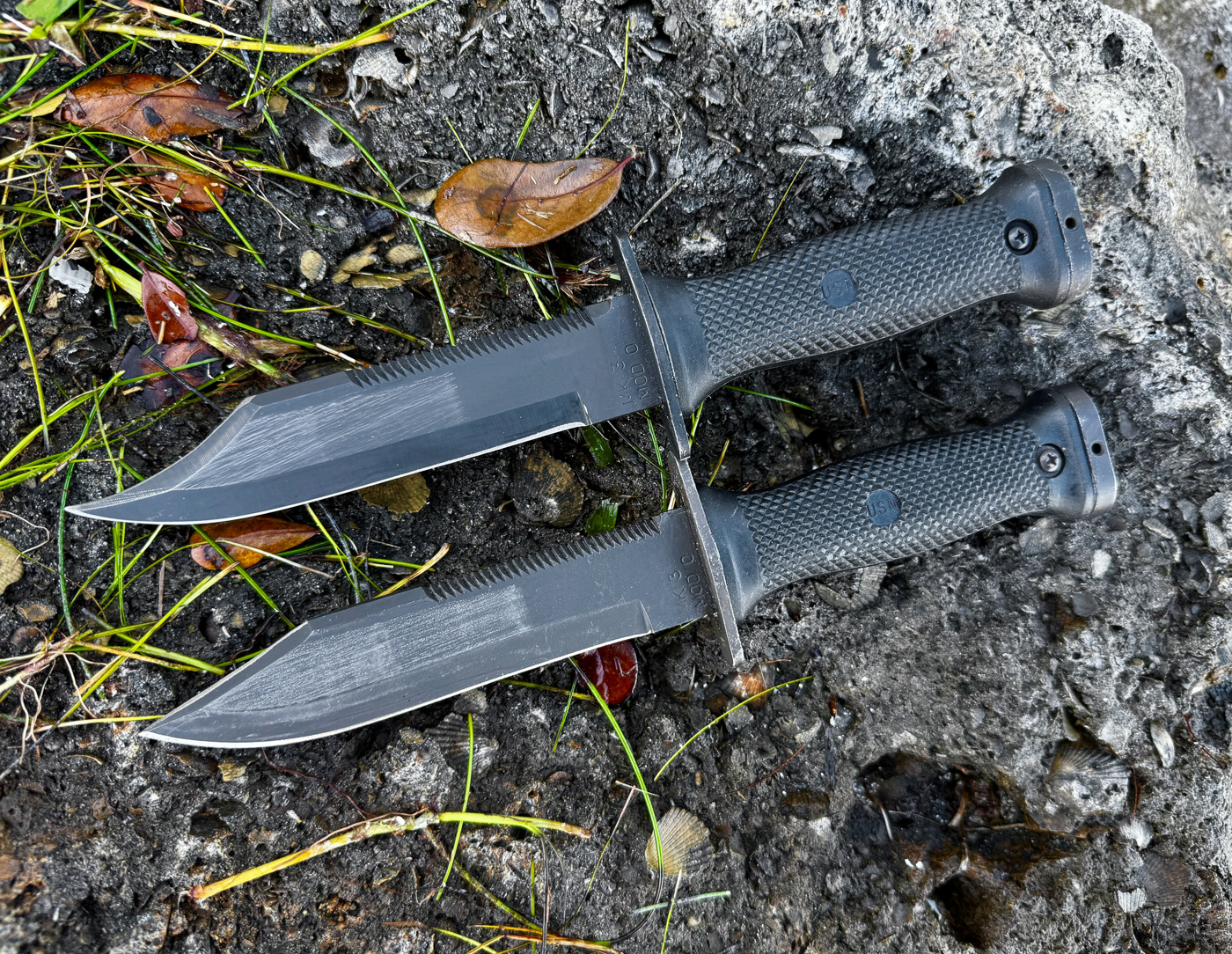
Not until the Mark 3 knife did the Navy explore a more purpose-driven bladed tool, which would be known as the Diving/Survival knife. Note that there is no nod to fighting or combat there. This tool was envisioned to return to utility with the possibility for defense. Its design would focus on several attributes.
The Details
First off was an anti-corrosion steel. The MK 1 and 2 had blades of high-carbon steel that would rust easily in the ocean. The new MK 3 MOD 0 was spec’d for stainless steel. 440A was chosen. Yes, 440C has better edge-holding abilities, but the lesser 440A is easily sharpened and tough. It was given the hardness of a softer 49 to 54 HRC. For a diving and survival knife, this milder stainless would suffice.
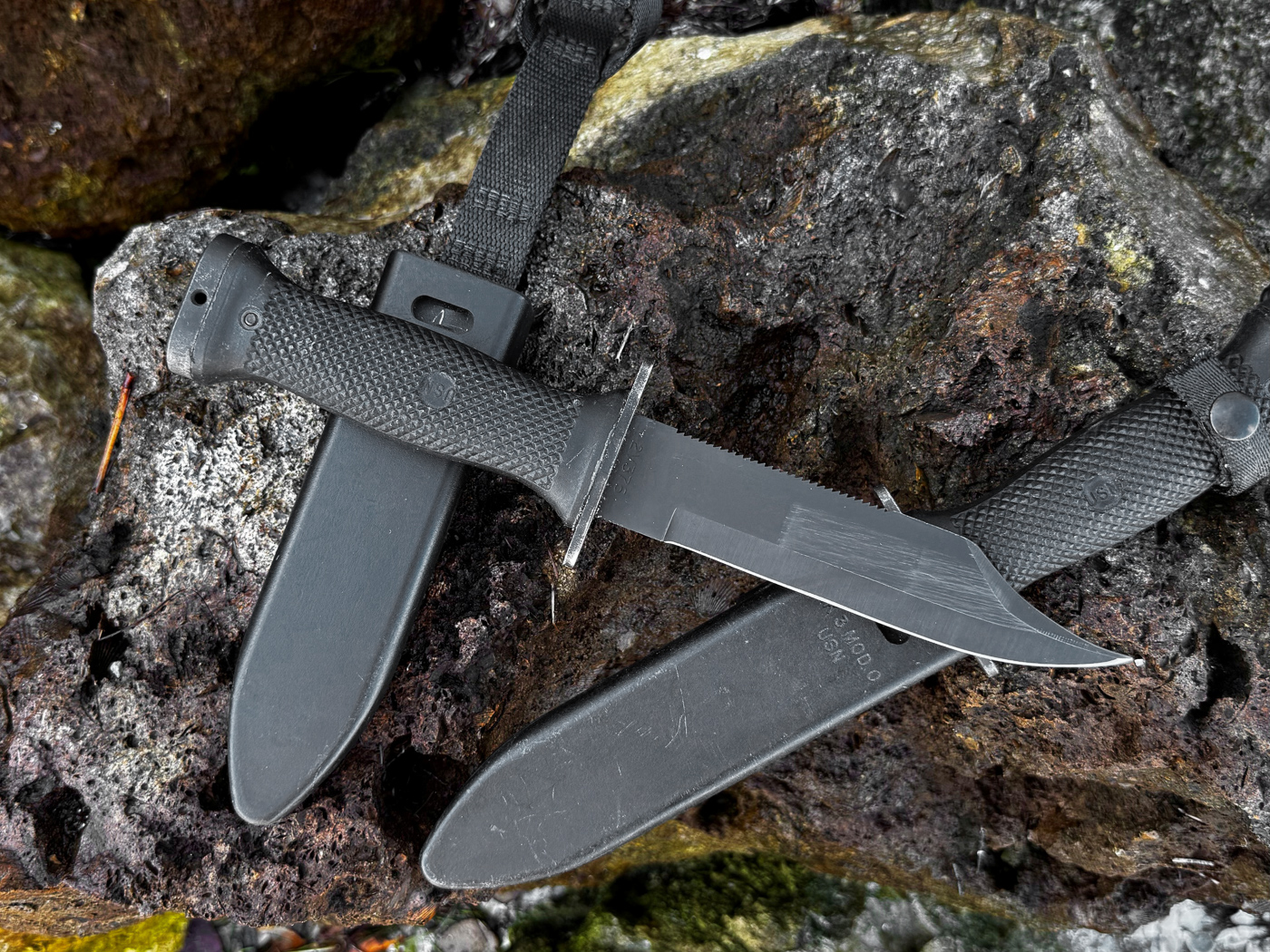
The low flat grind of the 6” blade suggests a generally sharpened pry bar. At the front, the blade’s clip was upswept for piercing. There are two types of blade shapes in the MK 3. The original knife had a very pronounced curve and thin stock at the tip. Sailors complained it was easily snapped off. Despite early input, the profile was not changed by OKC until the late 1990s. The new flat clip point was stronger.
Some argue that the pronounced change in the clip’s point should have necessitated a reclassification in nomenclature to MK 3 MOD 1, for the first modification to the original design, but neither the Navy nor OKC altered its name.
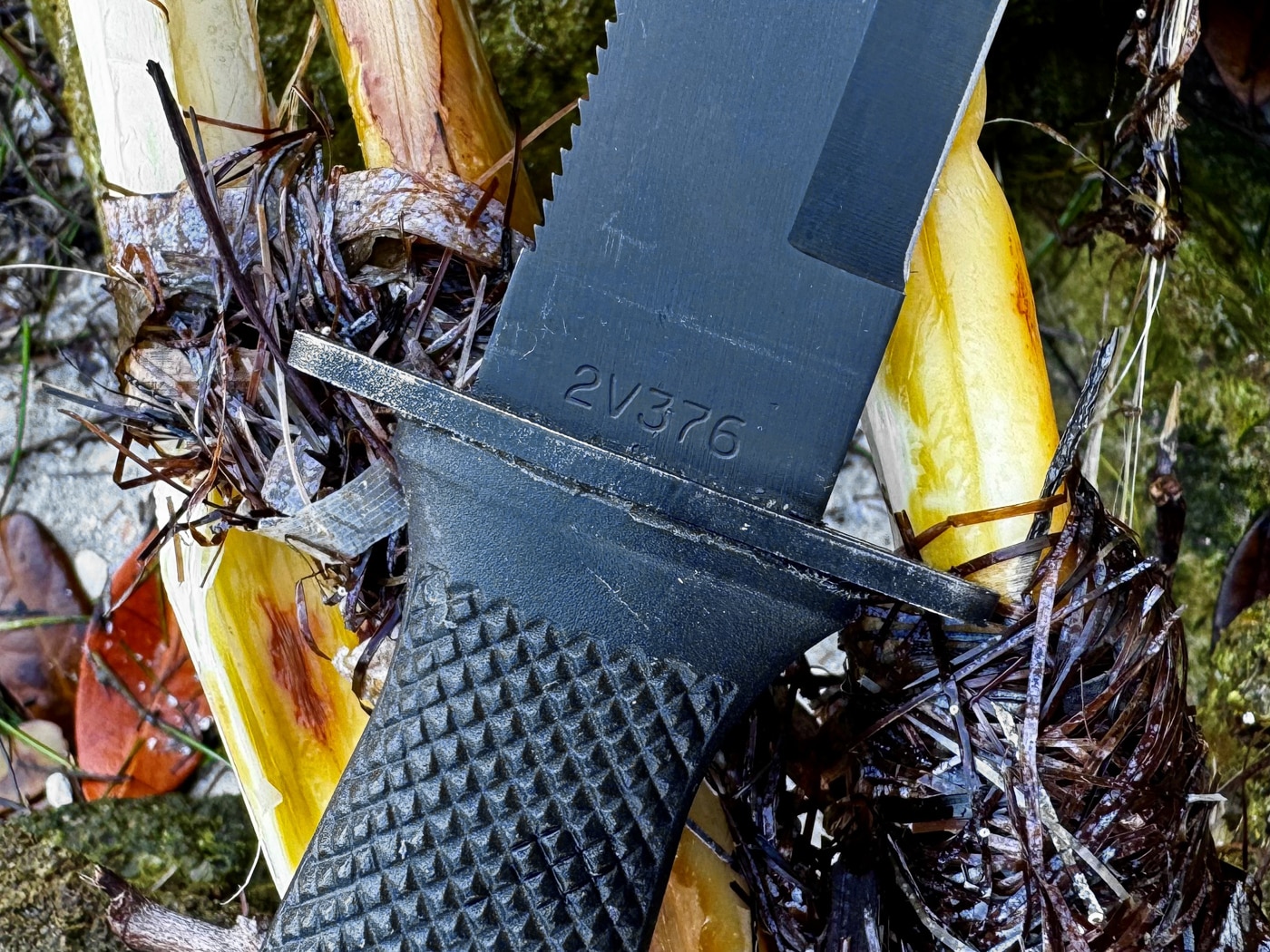
The blade itself is stamped MK 3 MOD 0 on the left side of the knife and 2V367 on the right, which is the CAGE number, or Commercial and Government Entity stamp, which identifies the manufacturer as the Ontario Knife Company. A black oxide coating protects the steel.
A saw rides on the top of the blade. Some have said it is not good for cutting wood, and that’s probably fair. The thickness of the blade would interfere with any deep cuts. However, it has been contended that the saw back’s true purpose was used to rend wet rope, as one might in a dive environment.
Hidden Feature
According to former OKC vice president of engineering, Paul Tsujimoto, the Mark 3 knife has a partial tang that extends back about 7/8th of the overall length of the knife. The tang is not connected to the steel pommel. It is a hidden feature with a hidden agenda.
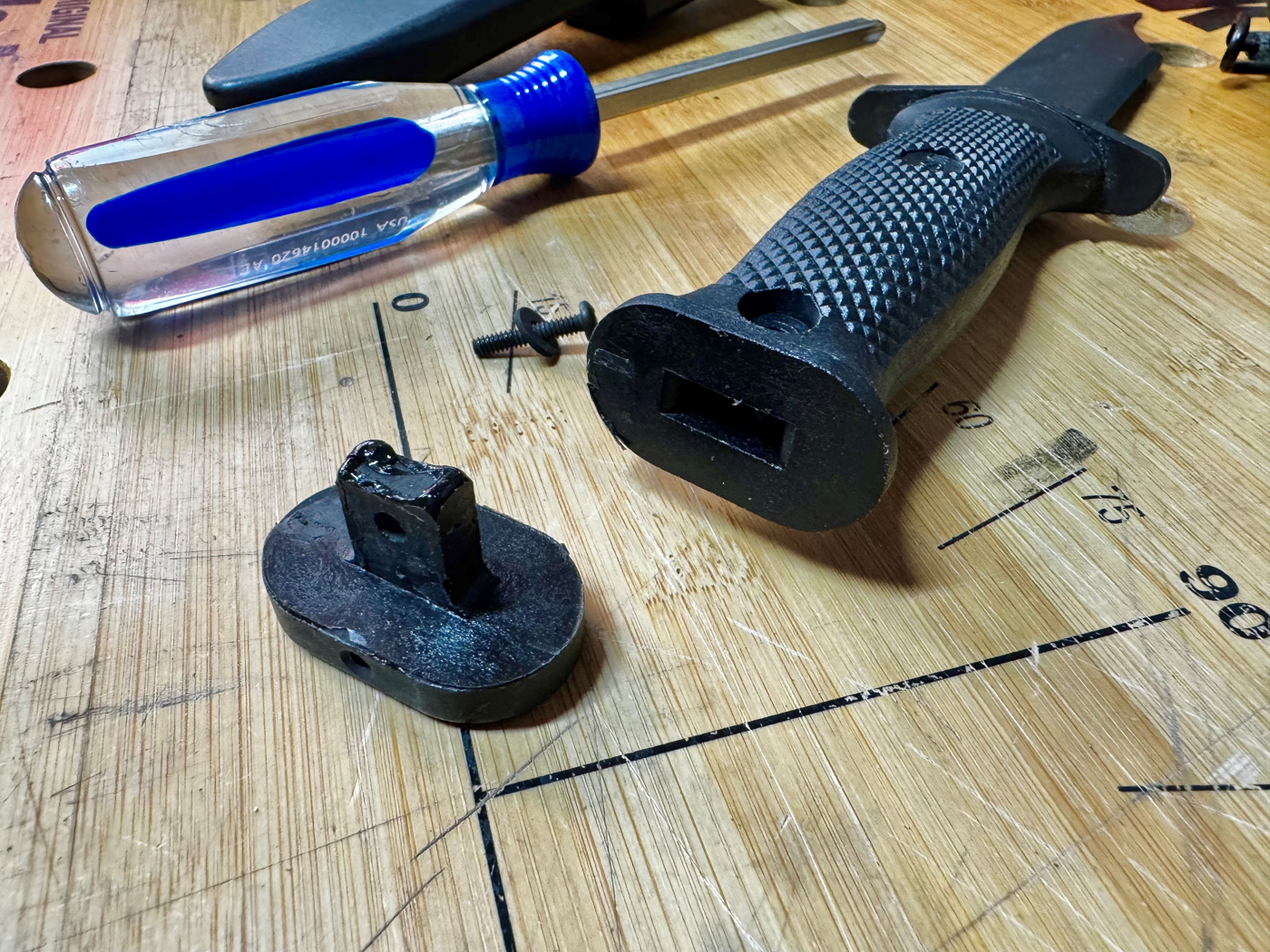
Tsujimoto writes, “The handle was originally a thermo-setting plastic (for strength and electrical insulation purposes) that is insert molded directly onto the tang/blade. The material is now a glass-filled PA (polyamide nylon) that has high heat, shock and electrical resistance. The handle has a cavity pocket on the end that the Pommel tang inserts into. The pommel is attached by a cross screw that secures it to the handle.”
So, the thermoplastic handle insulates the operator’s hand if a live wire is severed. The hefty steel pommel can still be used for hammering, but cannot conduct electricity. An ingenious feature of the build. Just a part of the MK 3 being seen as a working tool.
Packing It In
A heavy-duty, high-impact plastic sheath carries the MK 3. The markings MK 3 MOD 0 and USN adorn the upper front of the sheath. It has a metal collar and inner retainers that hold the knife quite vigorously. Nearly any Mark 3 knife you see will have vertical scratches in the black oxide finish from inserting and withdrawing the blade through the retention system.
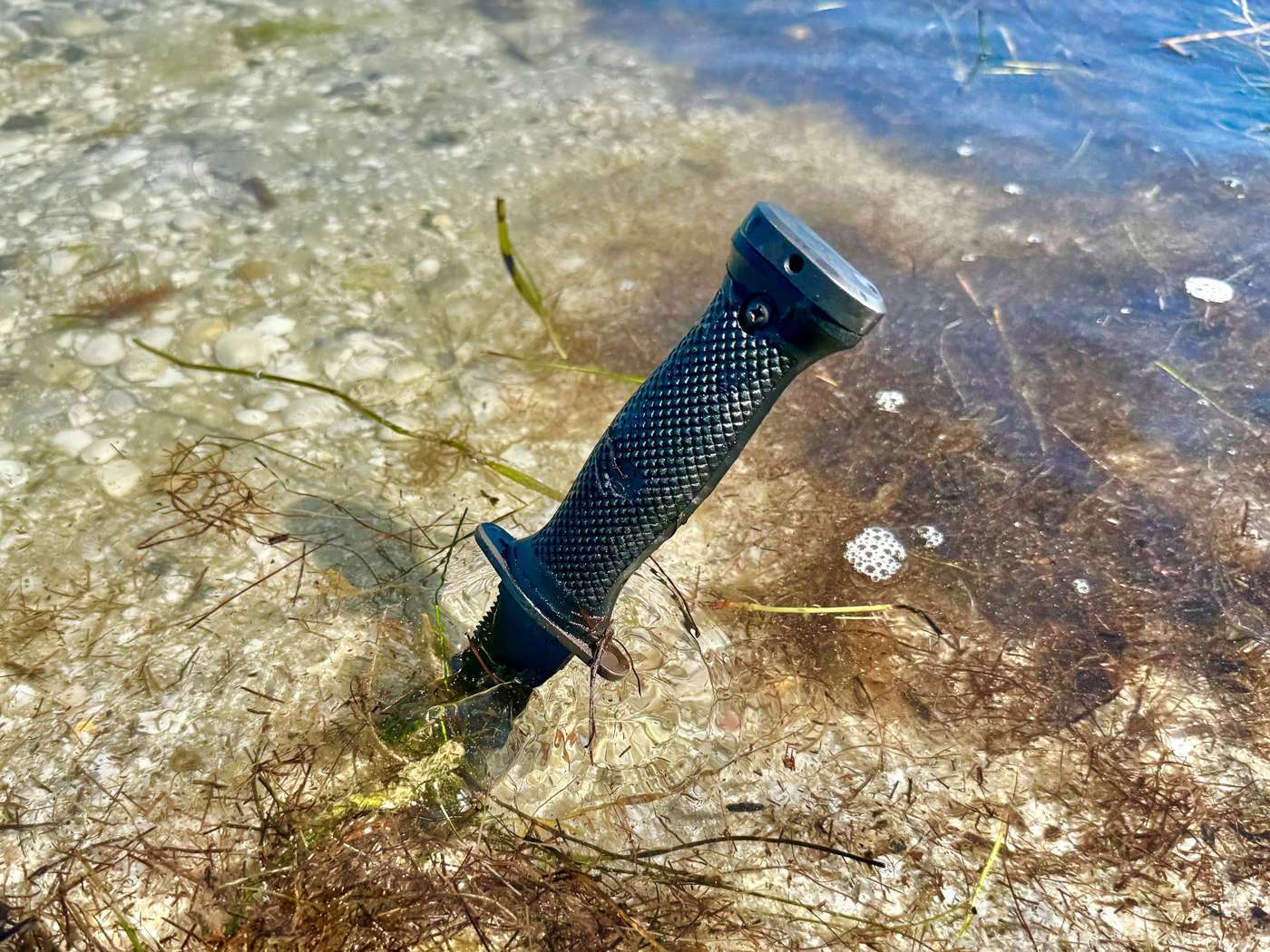
The sheath hangs from a nylon strap that has a snapped loop to secure the knife handle. At the top of the strap is a brass hanger that fits old-style canvas web belts, or later nylon belts and the LC-1 combat harness. The brass hanger can be removed and the sheath mounted on a standard belt. The MK 3 could also be affixed to a buoyancy compensator or strapped to a diver’s leg.
In Practice
We have seen the utility features intended for the MK 3 MOD 0: stainless steel blade, saw, hammer pommel, prying thickness, insulated handle and secure sheath. All laudable qualities in a Navy knife. For decades, the MK 3 MOD 0 was standard issue to sailors entering Basic Underwater Demolition/SEAL (BUD/S) training. But most of these knives would not see service past graduation.
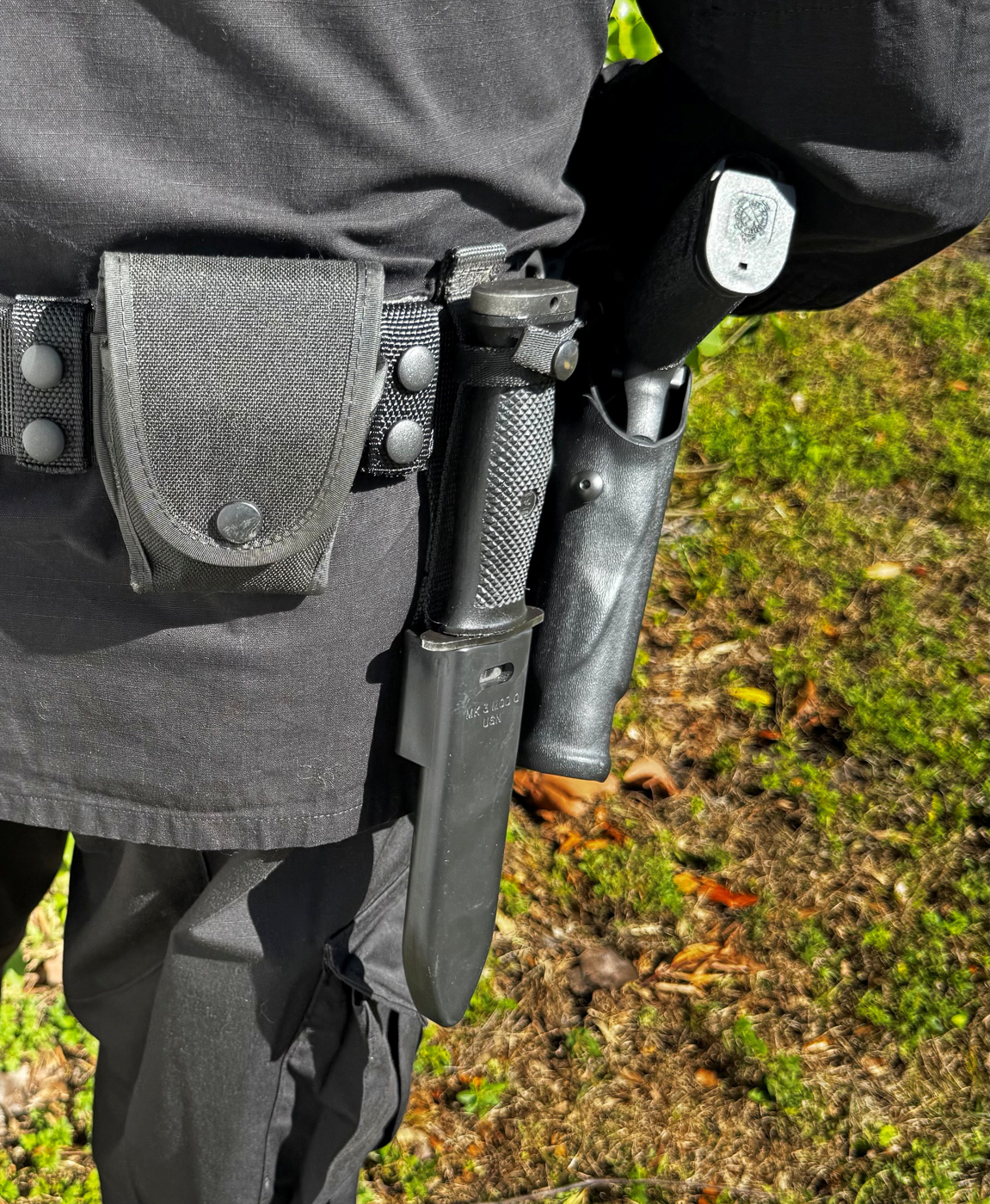
In my collection, I have a MK 3 original clip point and a MK 3 modified clip. My SWAT team’s coordinator procured them for us to wear on our pistol belts in the mid-1990s. Back then, we did not wear upgraded plate armor. It was a gun belt, soft body armor and thin nylon load-bearing vest for gear. A weighty knife on that old-style kit was no sweat. At 10.2 ounces without a sheath and 15.3 ounces with the sheath, the MK 3 was nearly a pound. I understand many SEAL operators did not want to add to their burgeoning equipment by cinching up a MK 3.
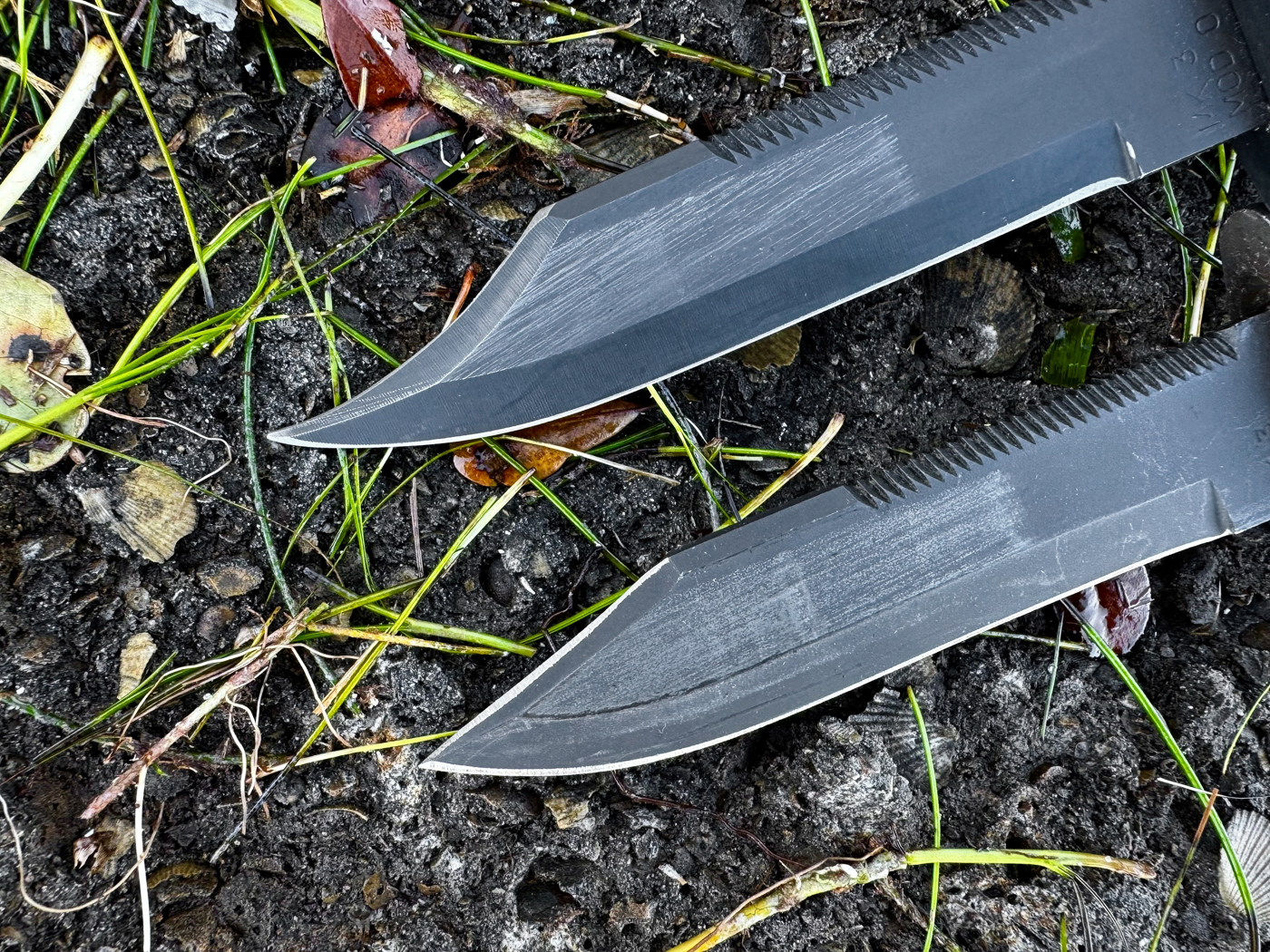
The MK 3’s blade steel was problematic. Sharpens well, dulls well are not the best qualities in a knife, especially one deploying into danger. At issue, too, was the fragile point of the early knives. If it easily breaks, it’s no good for the mission. The later modified clip point made the knife tougher, and it more resemble the profile of a Kalashnikov bayonet. Modern SEALs have been free to carry personally purchased blades.
Conclusion
The Navy MK 3 MOD 0 has been a historical part of the story of the SEALs for over 40 years. The knife was also issued to other Navy personnel, students in the USMC Combatant Divers Course and sold on the civilian market. It should undoubtedly be mentioned in any listing of the gear that real operators were issued. It had a National Stocking Number with the U.S. government to prove it.
Sadly, the Ontario Knife Company was sold in August of 2023. The company that purchased it has shuttered all operations. OKC had been in business since 1889. If you find a Navy MK 3 MOD 0 for sale, you will see that its price now far exceeds market value from when it was still in production.
Be sure to check out The Armory Life Forum, where you can comment about our daily articles, as well as just talk guns and gear. Click the “Go To Forum Thread” link below to jump in!
Join the Discussion
Read the full article here





